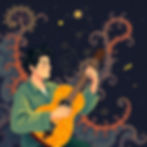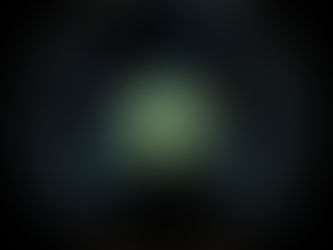
The Fractal Symphony: Unveiling the Mathematical Beauty of Music
Sep 6
3 min read
0
3
0

In the realm of art and science, few intersections are as captivating as the relationship between sound and fractals. Fractals, with their intricate patterns and self-similar structures, have long fascinated mathematicians and artists alike. Music, a universal language that transcends cultural boundaries, has been found to possess fractal properties that contribute to its aesthetic appeal. This post delves into the fascinating world of fractal geometry and its application in music, exploring how the mathematical beauty of fractals can be harnessed to create innovative sounds and influence musical composition, aka the Fractal Symphony!
The Fractal Nature of Music
Fractals are geometric shapes that repeat themselves at different scales, exhibiting self-similarity and complexity. In music, fractal patterns can be observed in various aspects, including rhythm, melody, and harmony. The repetition and variation of musical motifs, akin to the self-similar patterns found in fractals, create a sense of unity and coherence that resonates with listeners.
Fractal Patterns in Music
Research has shown that many musical compositions exhibit fractal properties, where patterns repeat and evolve over time. For example:
Rhythmic Fractals: The repetition of rhythmic patterns, such as ostinatos or rhythmic cycles, can create a fractal structure that engages the listener's attention.
Melodic Fractals: Melodic motifs that are repeated and varied can form a fractal pattern, adding depth and complexity to the music.
Harmonic Fractals: The use of harmonic progressions that repeat and evolve can create a sense of tension and resolution, mirroring the self-similar patterns found in fractals.
Fractal-Based Music Generation
Algorithmic Composition: By applying fractal algorithms to music composition, artists can create complex and engaging musical patterns that reflect the beauty of fractals.
Fractal Soundscapes: The use of fractal geometry to generate soundscapes can produce unique and captivating auditory experiences, from ambient textures to intricate rhythmic patterns.
Musical Innovation: Fractal-based music generation can inspire new musical styles and genres, pushing the boundaries of traditional music composition.
The Aesthetic Appeal of Fractal Music
The mathematical beauty of fractals can contribute significantly to the emotional impact of music. The intricate patterns and self-similarity found in fractals can evoke a sense of wonder and curiosity, making music more engaging and memorable. By harnessing the power of fractals in music, artists can create compositions that resonate with listeners on a deeper level.
The Science Behind Fractal Music
The application of fractal geometry in music is rooted in the mathematical principles that govern both art forms. Fractals are generated using iterative functions that produce self-similar patterns, which can be applied to musical structures to create complex and engaging compositions.
Fractals in Musical Composition
Fractals can be used in various aspects of musical composition, including:
Rhythm: Fractal patterns can be used to create complex rhythmic structures that engage the listener's attention.
Melody: Fractal geometry can be applied to melodic composition, creating intricate and memorable melodies.
Harmony: Fractal patterns can be used to generate harmonic progressions that add depth and complexity to the music.
The Future of Fractal Music
As technology continues to evolve, the possibilities for fractal-based music generation are expanding. With the development of new algorithms and software, artists can explore new ways to incorporate fractals into their music, pushing the boundaries of traditional composition.
Conclusion
The intersection of sound and fractals offers a fascinating area of exploration, where mathematics and art converge to create innovative and captivating musical experiences. By understanding the fractal nature of music and harnessing its potential, we can unlock new possibilities for musical composition and appreciation. Whether you're a musician, mathematician, or simply a music enthusiast, the world of fractal music invites you to explore the beauty and complexity of sound in a whole new way.
Additional Resources
For those interested in exploring fractal music further, there are numerous resources available, including:
Fractal music software: Various software programs can generate fractal-based music, allowing artists to experiment with new sounds and compositions.
Fractal music communities: Online communities and forums dedicated to fractal music provide a platform for artists to share their work and collaborate with others.
Fractal music research: Research papers and studies on fractal music offer insights into the mathematical principles underlying this unique art form.
By embracing the intersection of sound and fractals, we can unlock new possibilities for musical creativity and appreciation, exploring the beauty and complexity of music in a whole new way.





